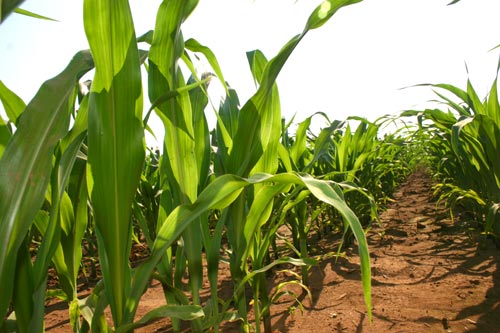
Aflatoxin is a nasty fungus.
“It undermines public safety and human health,” says Texas State Chemist Dr. Tim Herman.
Aflatoxin is a group 1 carcinogen, one of a select group of compounds known to cause cancer,” he said during a presentation at the recent Texas Plant Protection Association annual conference in College Station.
He said the issue can be particularly touch with Texas corn production. “It has not been uncommon to see samples as high as 1,000 parts per billion,” he said. A 20 parts per billion level is the cutoff for human consumption.
Annually, aflatoxin costs U.S. corn producers as much as $200 million, says Ben Boerner, president of the Texas Grain and Feed Association. “It’s a huge challenge to growers and grain handlers and feed and flour mills,” he said.
The issue was first identified as a problem back in 1988. “Our members are still trying to get their hands around it,” he said.
A weakness in handling, he said, is an inability of some grain elevators to segregate contaminated grain from clean grain. In some cases, they choose not to accept grains with aflatoxin levels higher than 20 parts per billion.
The challenge for producers and industry is to find a way to reduce aflatoxin contamination to levels acceptable for animal feed and human consumption.
Tom Isakeit, Texas AgriLife Extension plant pathologist, is looking for solutions. Isakeit told TPPA conference participants that two products, AflaGuard and AF-36 show promise in reducing aflatoxin levels in the field.
Both products are atoxigenic forms of the aspergillus fungus and reduce levels of the toxic strain by out-competing it. Success depends on getting the atoxigenic fungus applied to corn before the toxic fungus gets established. “We know the product work,” Isakeit said. “The question is do they work on all farms?”
He said the products “are not the answer but are part of an on-going search for a solution.”
He’s looking at application timing as well as product efficacy. In four tests in 2011 results were variable. In some locations, aflatoxin levels were too low to justify application and benefits were either negligible or nonexistent.
“In a Hill County test, all atoxigenic treatments reduced aflatoxin levels by half,” he said. “Application was partially effective.
In Colorado County, he applied the materials close to flowering. “I don’t recommend that,” he said. In that test aflatoxin was not present, even during a drought year. “We had no benefit from the products,” Isakeit said.
In Ellis County, the product made a significant difference. “We used AflaGuard and it reduced aflatoxin levels by half,” he said.
Further testing
Further testing will include application timing.
Isakeit is also looking at transgenic hybrids to evaluate effect on aflatoxin levels. “We sued small plots and inoculated them with aflatoxin,” he said. ‘We saw no benefit with transgenic hybrids for either aflatoxin or fumonisin. We did see some difference between hybrid parents that confirmed earlier work, but we don’t have enough information yet to make a recommendation.
“We did see a benefit from AflaGuard in the test and also a significant reduction in fumonisin. We found no interaction of AflaGuard with transgenic hybrids.”
Isakeit said current recommendations indicate a 13 pound per acre rate. Application is typically made at the V9 to V10 growth stage of corn but Isakeit is looking at earlier application—V5 or V6.
“Earlier application would make it a lot easier for growers. At that stage they could use a ground rig instead of relying on aerial application.”
Improving control of aflatoxin could be a significant advantage to Texas corn producers, said Phil Hamilton, risk management specialist with the USDA risk Management Agency. He said insurance rates, at some point, could come down for corn growers who use the atoxigenic products.
He also said the state’s reputation as a reliable corn supplier also would get a boost from consistently lower aflatoxin levels.
About the Author(s)
You May Also Like






